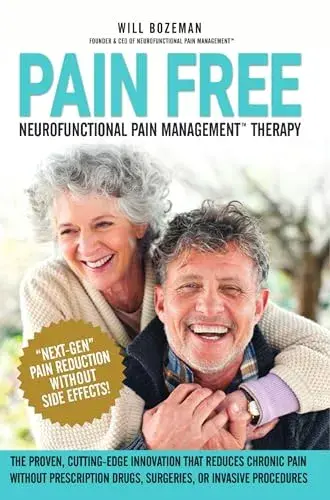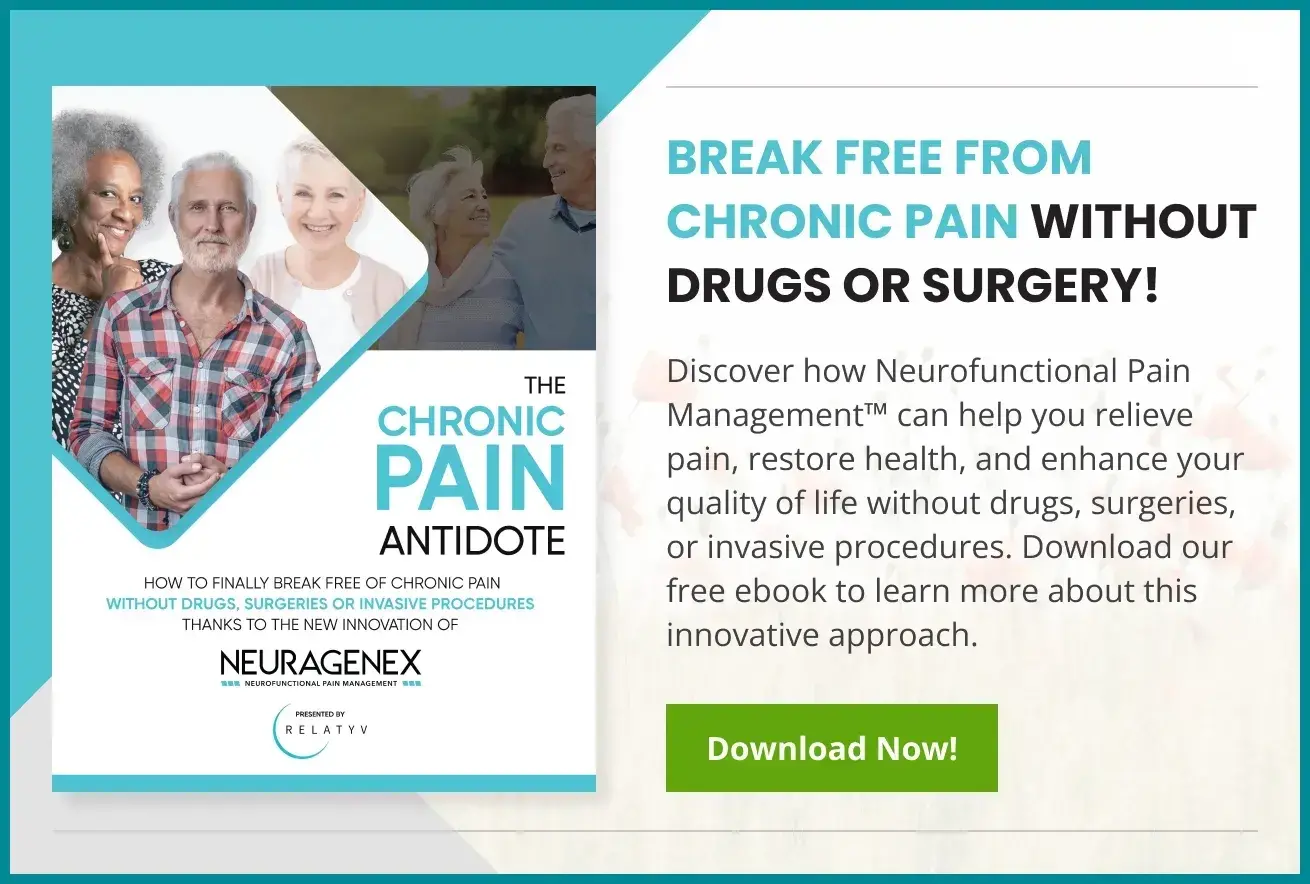Osteoporosis

Can Osteoporosis Be Reversed?
Read More
Osteoporosis pain is one of the lesser-known pain conditions in the world of chronic pain. Osteoporosis is fairly well-known by most people as a condition of fragile, thinning bones that increases the risk of fractures.
Aside from the details surrounding the cause and effects of osteoporosis, there is a pain element to this condition that typically originates in the central regions of the back and spine.
As we’ve discussed in many other articles, some pain may be caused in one area but felt in another area as referred pain. This makes it harder to know exactly where the source of pain is coming from and often leaves patients and medical providers frustrated over the elusiveness of referred pain in some cases.
Osteoporosis is a condition that takes time to develop, so patients are often unaware of it until they have it. Because of the gradual onset of osteoporosis, physicians have employed routine screenings for patients at certain stages of life or have been diagnosed with comorbidities to check for the disease.
There are many preventive measures that can be taken to reduce the effects of osteoporosis and even restore bone density. Lifestyle modification in the way of diet and exercise is a very good place to start, however, if a patient is in pain, it makes it harder to engage in exercise and makes them less motivated to do anything health related other than to find relief for the pain.
As patients learn of their condition and its treatment options, they may find more courage to make the changes they need to mitigate and manage the risk. With knowledge of osteoporosis, effective risk management, and proven treatment, patients will be best equipped to tackle their condition head-on.
Osteoporosis is a unique condition whose symptoms might be described as hidden or withdrawn. To understand the degenerative nature of human bones and skeletal structure in general, we must first observe the condition and composition of our bones.
All 206 bones in the human body are composed of calcium tissues that are filled with tunnels and networks of holes and pockets that allow for bone cells to live and work, blood vessels to supply them, and nerves to connect to the central nervous system.
Unfortunately, there are several risk factors associated with osteoporosis, from sex to race and hereditary characteristics. Some of these risk factors can be mitigated by a change in lifestyle, while others are immutable. Either way, as fixed risk factors such as age increase, the likelihood of a diagnosis of osteoporosis increases.
It is common that patients who have the following risk factors are more likely to develop osteoporosis:
Although osteoporosis may affect anyone, the prevalence of this disease is greater among people who are excessively thin or have a small body frame. This is because small-framed individuals are more likely to have less bone mass to draw on as they age.
This risk can be managed by maintaining a healthy weight, making physical activity part of your routine, eating a balanced diet, and avoiding nutritional deficiencies.
Bone health is often correlated to hormonal health. Some inevitable hormonal changes may have an impact on bone mineral density and lead to conditions such as osteoporosis.
In particular, sex hormones – such as estrogen and testosterone – play a vital role in preserving a healthy bone mass.
During development, estrogen supports the maturation of the bone. As we age, this same hormone regulates bone turnover or the rate at which minerals in the bones are released and replenished.
The rates of estrogens in the body drop significantly during menopause, which causes the bones to start breaking down faster than they can be regenerated. Women who had their ovaries removed may also suffer from similar effects because of the sudden drop in estrogen levels that occurs after the surgical procedure.
The hormonal changes that take place in a woman’s body, coupled with the smaller frame of females, make women over 50 four times more likely than men to develop osteoporosis.
Other conditions affecting the endocrine system – such as drops in testosterone levels due to prostate cancer, thyroid disorders, and gland overactivity – can speed up the rate at which bone mass is lost.
The living tissue that constitutes the bones is constantly changing and regenerating, using minerals such as calcium and phosphate to replenish old or lost bone tissue. This process is referred to as bone metabolism.
However, as we age, the body begins to reabsorb these minerals instead of using them to rebuild the bone structure, which causes bone metabolism to slow down and bones to break down.
When the bone breakdown happens faster than the rate at which the body can regenerate old tissue, bone loss occurs. And, this can lead to osteoporosis. In the highest-risk group – which is constituted of women aged 60 to 80 – screening rates for osteoporosis are as low as 12.8%. This means that, although osteoporosis is significantly prevalent in women and men aged 55 and 65 or over respectively, most patients don’t discover their condition until they experience a fracture.
Women are more likely than men to suffer from this disease. This is because, often, the aging-related bone mass loss occurs at the same time as menopause, when the drop in estrogen levels aggravates their bone health. Females are also more likely to have a smaller or slighter frame, which is linked to less bone mass.
Patients can take away from this assessment that women are more likely to be diagnosed with osteoporosis, and they would be correct. However, Dr. Rinonapoli and his associates do not discount the possibility of its diagnosis showing up in men: “Osteoporosis is considered a female disease.
However, while there is no doubt that women are more exposed to osteoporosis and fragility fractures, the literature clearly indicates that physicians tend to underestimate osteoporosis in men” (2021).
Men, especially men who experience the conditions of osteoporosis, should not discount the possibility of being diagnosed with the condition because sex is not the only determining risk factor.
It must be understood that patients who would otherwise seem healthy cannot change the immutable risk factors.
However, factors that can be changed to reduce the likelihood of a diagnosis include diet, exercise, and sometimes a change in medications that might worsen the condition.
Since our bones are made up of porous tissues of calcium, the early introduction of calcium and vitamin D to a patient’s diet is likely to decrease the risk of being diagnosed with osteoporosis. In the same way, changing to a more active lifestyle may increase bone strength and density, decreasing the likelihood of osteoporosis.
Regardless of the risk factors associated with osteoporosis, diagnosis is often tricky and commonly missed before bone fractures occur. Patients who do not wish to wait for a fracture to learn of their diagnosis and treatment options may find comfort in learning about and recognizing the signs of osteoporosis.
These early signs might be better recognized by examining family history with osteoporosis, acknowledging prescribed medications that might contribute to loss of bone density, testing balance, noticing a loss of posture, or assessing applicable risk factors.
If any of these signs are apparent to you, we would advise seeking a possible diagnosis from a medical professional before a fracture occurs.
One of the less discussed components of osteoporosis is the pain associated with the condition. The pain physicians I have worked with and discussed this condition with have noted that patients with osteoporosis typically experience pain referred into the back and spine, even if the osteoporosis issues are occurring throughout the body.
This is because all the pain neurons connect to the central nervous system, so perhaps this is why someone with a full-body condition is predominantly experiencing pain in the back. This actually creates a target area for pain relief, so perhaps there is some positive use for this occurrence.
We created and pioneered the field of Neurofunctional Pain Management. This new category of pain management attempts to relieve pain through high-pulse electrical stimulation while engaging in a health restoration effort to revitalize the tissues and stimulate cellular activity.
This may help to lessen the onset of osteoporosis and even possibly help the bone cells and tissues reverse course and build back bone density.
The combination of high-pulse electrical stimulation and specialized hydration therapy offered simultaneously is a proprietary treatment protocol called Neuralgesia, which is exclusive to Relatyv. This combination works together to produce enhanced pain relief that can endure for several months after a patient completes a course of treatment.
In addition to electrical stimulation and hydration therapy, patients undergo an extensive lifestyle counseling and education program that helps them understand the range of lifestyle activities that are needed to produce long-term effects on their health, with an emphasis on remaining out of pain.
As with all courses of treatment, from medications to physical therapy, patients with osteoporosis are most likely to achieve effective and long-lasting pain relief if they complete the entire course of therapy and stick to the prescribed treatment plan. Treatments typically last for one hour, twice a week.
The combination of high pulse electrical stimulation, which creates a sustained depolarization effect in pain neurons and stimulates repair of damaged tissues in the area, and hydration therapy consisting of vitamins, minerals, and other nutritional components.
Patients typically experience pain relief after only a few visits and often report additional significant improvements in their quality of life in short periods of time, such as feeling more energetic during the day and sleeping better at night.
The mission of Relatyv is to relieve pain, restore health, and magnify quality of life without drugs, surgery, or invasive procedures, while operating as a non-pharmaceutical, non-surgical, non-invasive, and non-chiropractic pain treatment program.
Our vision is to be the first thought, the first choice, and the first step in the journey of chronic pain relief.
And we understand that, with a custom vitamin and mineral treatment, healing electrical stimulation, education, and lifestyle modifications, Neurofunctional Pain Management is really the future of chronic pain management.
About the Author
Will is a healthcare executive, innovator, entrepreneur, inventor, and writer with a wide range of experience in the medical field. Will has multiple degrees in a wide range of subjects that give depth to his capability as an entrepreneur and capacity to operate as an innovative healthcare executive.
Share on Social Media




You can see how this popup was set up in our step-by-step guide: https://wppopupmaker.com/guides/auto-opening-announcement-popups/
You can see how this popup was set up in our step-by-step guide: https://wppopupmaker.com/guides/auto-opening-announcement-popups/
Neurofunctional Pain Management Overview
Symptoms
Conditions Treated
Treatments
Articles by Category
Locations
Colorado
Wisconsin
Georgia
Hiram
Lawrenceville
Marietta
Powder Springs
Texas
Waco
Victoria
Illinois
Buffalo Grove
New Lenox
St. Charles
Arizona
Tucson
Waddell
Arlington
Avondale
Buckeye
Superior
Mesa
Palo Verde
Morristown
Tempe
Chandler
Anthem
Eloy
Florence
Fort McDowell
Phoenix
El Mirage
Coolidge
Gilbert
Arizona City
Casa Grande
Casa Blanca
Aguila
Sacaton
Apache Junction
Kearny
Stanfield
Goodyear
Litchfield Park
Alabama
Arkansas
California
Florida
Idaho
Indiana
Iowa
Kansas
Louisiana
Maryland
Michigan
Rhode Island
Minnesota
Mississippi
Nevada
New Jersey
New Mexico
North Carolina
Ohio
Pennsylvania
South Dakota
Tennessee
Utah
Virginia
Washington

